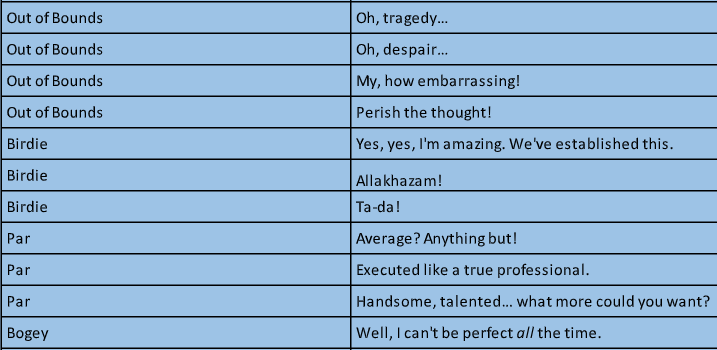aspiring narrative designers & game writers: let& #39;s talk about barks, and-- if you& #39;re not familiar with this term--why you might want to have them in a writing portfolio. (thread)
many folks are aware of the value of having a branching narrative/twine piece in a portfolio. that stuff is great! it shows your ability to think about player agency & the way players express themselves within a story system. however, many games need something a little different.
think about games where there are lines of VO, but not an overarching "story." Overwatch, Apex, LoL, Valorant, Hearthstone... etc. You& #39;ll notice these games often have characters or an announcer who deliver one-off quips or brief exchanges to punctuate specific gameplay moments.
These VO lines are called "barks." Almost every story-focused game has them, too; think about any JRPG where, in combat, characters deliver specific punchy lines when they take particular actions. "Take that!" or "You& #39;re going down!" or "Yeah, we did it!" type stuff.
The thing is, many game companies NEED writers and NDs who can write barks and/or understand what makes a great bark. However, simply working on long-form interactive narrative pieces and Twine-type stuff will not necessarily teach you the skills to write a good bark.
Here& #39;s a NDA-safe example I can share. This is from a game you& #39;ve never heard of called Powerstar Golf. I wrote barks for each golfer. This character, Henry, is a debonair and self-absorbed stage magician. Here& #39;s Henry, and here are some barks (right) with their triggers (left).
Generally barks are:
1. Not very long. Some might even be one word. A good rule of thumb is sub 5 seconds, spoken aloud.
2. Saturated with the character& #39;s nature. Junkrat& #39;s evil, gleeful "Fire in the hole!" or McCree& #39;s drawling, confident "It& #39;s high noon..." come to mind.
1. Not very long. Some might even be one word. A good rule of thumb is sub 5 seconds, spoken aloud.
2. Saturated with the character& #39;s nature. Junkrat& #39;s evil, gleeful "Fire in the hole!" or McCree& #39;s drawling, confident "It& #39;s high noon..." come to mind.
At every company I& #39;ve worked for, these were handled in spreadsheet format; a number of barks per "gameplay trigger" (e.g. Ult line, Ability A, Ability B, card first enters play...) I think this is a good format for a portfolio, too.
For NDs, solving "the bark problem" is a foundational thing you often need to do on a game. How should barks fire? Can barks clobber each other, queue, or take priority? What about "reply" barks from other characters? What are some gameplay opportunities for new bark types?
...So even if you aren& #39;t an ND who plans to do much writing, demonstrating familiarity with the ways barks work is a useful thing to have in a portfolio. It says that you understand the needs of games which DO NOT have a much deeper/richer story element.
A good exercise to try might be:
- Take any online MP game; Overwatch, League, Hearthstone, Apex, etc
- Write down some of the gameplay "events" where you see characters barking
- Make up your own new character. Write a short bio.
- Write a bark sheet for this character.
- Take any online MP game; Overwatch, League, Hearthstone, Apex, etc
- Write down some of the gameplay "events" where you see characters barking
- Make up your own new character. Write a short bio.
- Write a bark sheet for this character.
Lastly, I sometimes see writers dismiss barks as trivial or shallow work. But the opposite is true. In many games, players spend THOUSANDS of hours re-listening to barks and will even memorize them. Bad barks are actively painful, but good barks are iconic for years to come.

 Read on Twitter
Read on Twitter




